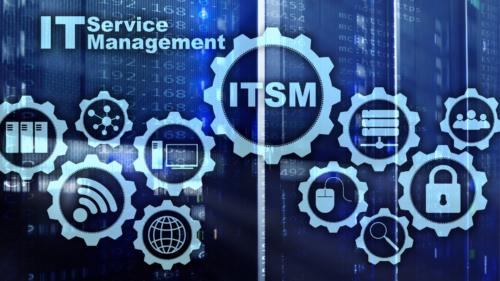Information Technology (IT) plays a crucial role in the smooth functioning of businesses and organizations. However, things can go wrong and IT incidents can occur, disrupting the flow of work and causing frustration for users. IT incident management identifies, addresses, and resolves IT incidents as quickly as possible to minimize their impact on the organization.
IT incident management is a critical component of IT service management (ITSM) that focuses on the prompt restoration of services after a disruption, while minimizing any adverse effects on business operations.
An IT incident is any event that disrupts or threatens to disrupt the regular operation of IT services. These events can range from technical failures, such as hardware or software malfunctions, to human errors, such as accidentally deleting important data. IT incident management aims to restore standard service as quickly as possible and minimize the impact on the organization.
What Is IT Incident Management?

IT incident management identifies, addresses, and resolves IT incidents as quickly as possible. It involves a systematic approach to incident resolution, with well-defined processes and procedures to ensure that incidents are dealt with efficiently and effectively.
🔥 Read our blog post: What Is Incident Management?
The incident management process typically involves the following steps:
- Incident identification: The first step in the incident management process is identifying that an incident has occurred. This can be done through monitoring tools, user reports, or other means.
- Incident classification: Once an incident has been identified, it is classified based on its severity and impact on the organization. This helps prioritize the incident and determine the appropriate level of response.
- Incident resolution: After an incident has been classified, it is passed to the appropriate team or individual for resolution. This may involve troubleshooting, repairs, or other actions to restore regular service.
- Incident closure: Once an incident has been resolved, it is marked as closed, and any necessary incident documentation is completed.
Why Is IT Incident Management Important?
Effective IT incident management is critical for minimizing the impact of IT incidents on an organization. When an IT incident occurs, it can cause disruptions to business operations and lead to lost productivity, customer dissatisfaction, and financial losses. By addressing incidents quickly and efficiently, organizations can minimize these negative impacts and ensure that their IT services run smoothly.
In addition, IT incident management helps organizations improve their overall IT service delivery. By tracking and analyzing incident data, organizations can identify patterns and trends and make changes to prevent similar incidents from occurring in the future. This helps improve the reliability and stability of IT services, leading to increased customer satisfaction and loyalty.
The Benefits of Effective IT Incident Management

Effective IT incident management has several benefits for organizations, including:
- Improved service delivery: By addressing IT incidents quickly and efficiently, organizations can ensure that their IT services are running smoothly, leading to improved service delivery.
- Increased productivity: When IT incidents occur, they can disrupt business operations and lead to lost productivity. Organizations can quickly resolve incidents and keep employees productive by minimizing these disruptions.
- Enhanced customer satisfaction: Customers expect IT services to be reliable and always available. By managing incidents effectively, organizations can meet these expectations and improve customer satisfaction.
- Cost savings: The longer an IT incident goes unaddressed, the greater the impact on the organization. By addressing incidents quickly, organizations can minimize the costs associated with downtime and lost productivity.
Challenges in IT Incident Management

Managing IT incidents can be challenging, as there are often many variables and a wide range of potential causes for an incident. Some common challenges in managing IT incidents include:
- Limited resources: IT incidents often require a quick response. Still, organizations may need more resources (such as staff or equipment) available to address the incident promptly.
- Complexity: IT systems can be complex, with multiple components and dependencies. This can make it challenging to identify the root cause of an incident and determine the best course of action for resolution.
- Limited visibility: With proper monitoring and reporting tools, organizations can quickly identify incidents as they occur and track their progress through the resolution process.
- Communication breakdowns: Effective communication is critical when multiple teams or individuals are involved in the incident resolution. However, communication breakdowns can occur, leading to delays and confusion.
How to Overcome These Challenges
To overcome these challenges and ensure effective IT incident management, organizations can implement the following best practices:
- Implement a robust incident management process: A well-defined incident management process can help organizations respond to incidents quickly and efficiently.
- Invest in the right tools and resources: To manage incidents effectively, organizations need the right tools and resources, such as monitoring and reporting tools, knowledgeable staff, and the necessary equipment.
- Foster assertive communication and collaboration: Effective communication and collaboration are critical for incident resolution. Organizations should encourage open communication and ensure that all relevant parties are informed and involved in the resolution process.
- Regularly review and improve processes: To continually enhance incident management processes, organizations should periodically review and analyze incident data to identify patterns and trends and make necessary changes.
Steps to Take When Managing IT Incidents

When an IT incident occurs, it is essential to take a systematic approach to address and resolve the issue. Here are some steps to take when managing IT incidents:
1. Identify the Incident 🔍
The first step in the incident management process is identifying that an incident has occurred. This can be done through monitoring tools, user reports, or other means.
2. Classify the Incident 📊
Once an incident has been identified, it is essential to classify it based on its severity and impact on the organization. This helps prioritize the incident and determine the appropriate level of response.
3. Assign the Incident 👨💻
After an incident has been classified, it should be passed to the appropriate team or individual for resolution. This may involve troubleshooting, repairs, or other actions to restore regular service.
4. Communicate the Incident 🔥
Keeping all relevant parties informed about the status of an incident is essential for effective incident management. This includes updating users on the quality of the incident and any steps being taken to resolve it.
5. Document the Incident 📝
It is essential to document the incident, including details such as the time it occurred, its impact on the organization, and the steps taken to resolve it. This information can be used to analyze the incident and identify ways to prevent similar incidents.
6. Resolve the Incident ✔️
Once the root cause has been identified, the appropriate actions should be taken to resolve the issue and restore standard service.
7. Close the Incident ☑️
After an incident has been resolved, it is essential to mark it as closed and complete any necessary documentation. This can help ensure that the concerned authorities adequately document the incident management process and take note of any lessons learned from the incident.
Summing Up
IT incident management is critical to ensuring the smooth operation of IT services within an organization. Organizations can reduce disruptions and improve service delivery by addressing incidents quickly and efficiently. IT Service Management (ITSM) plays a crucial role in effective incident management, providing a framework for designing, delivering, managing, and improving IT services.
Effective IT incident management also requires overcoming common challenges, such as limited resources, complexity, and communication breakdowns. By implementing best practices, such as a robust incident management process, investing in the right tools and resources, fostering strong communication and collaboration, and regularly reviewing and improving processes, organizations can ensure that they prepare well to handle any IT incident that may arise.
Therefore, IT incident management is a vital component of effective IT service delivery, and organizations should prioritize it to ensure the smooth operation of their IT systems.





